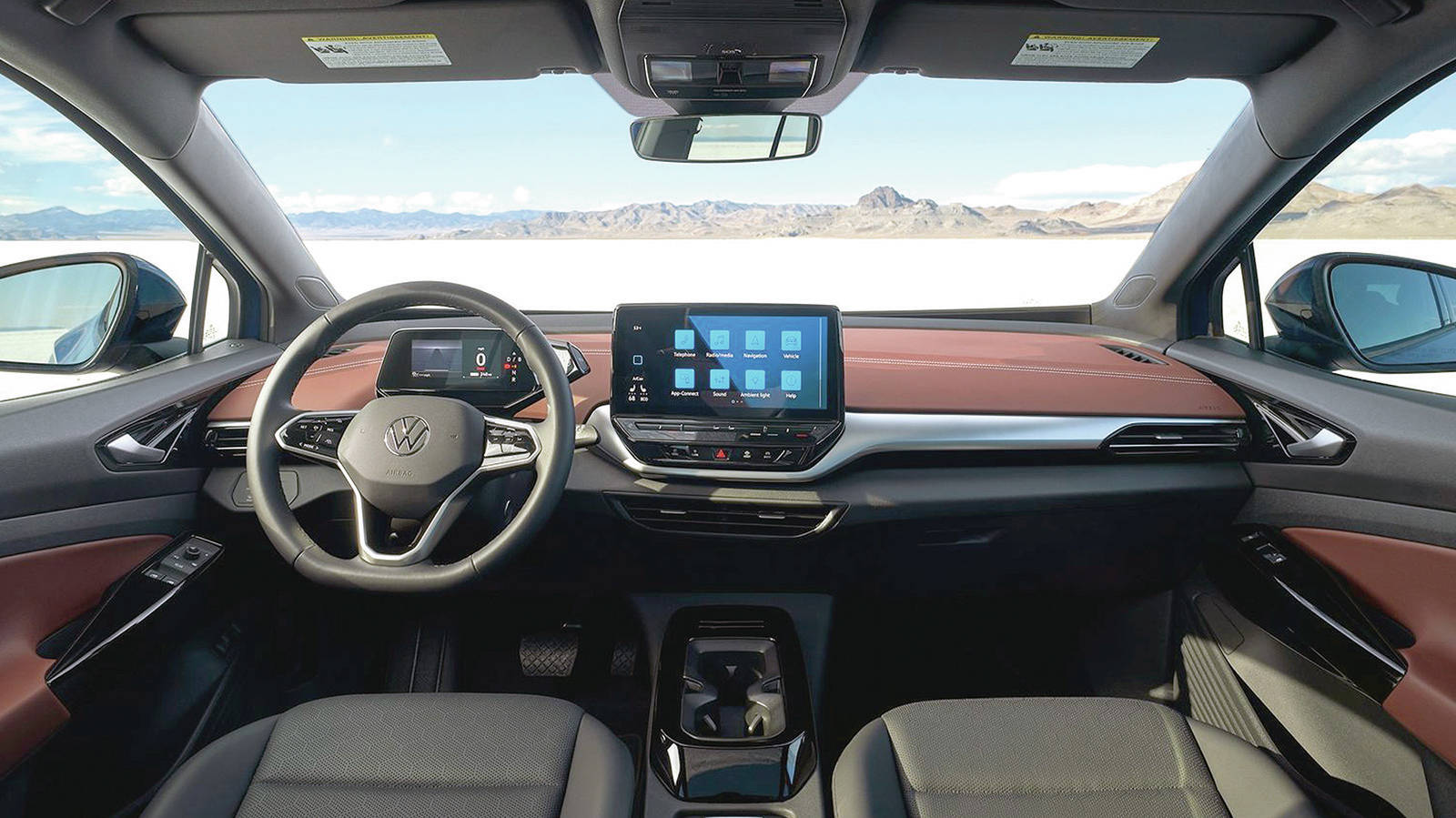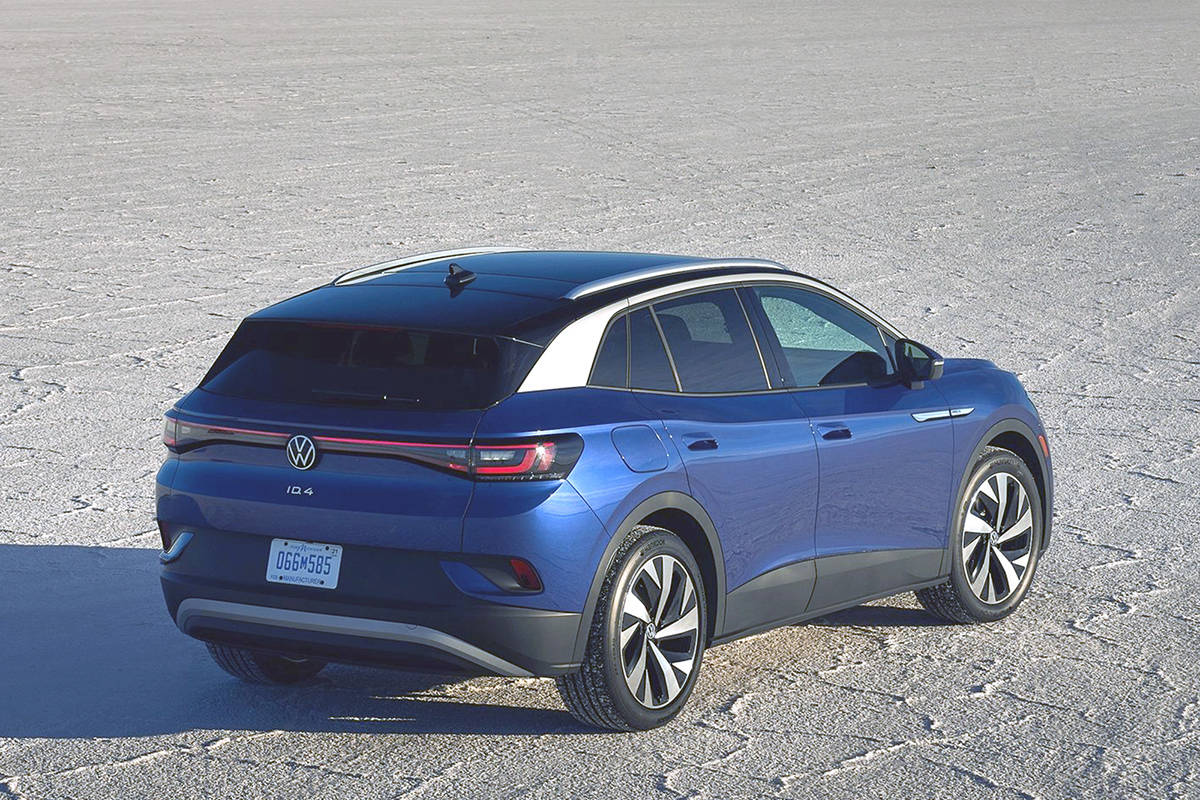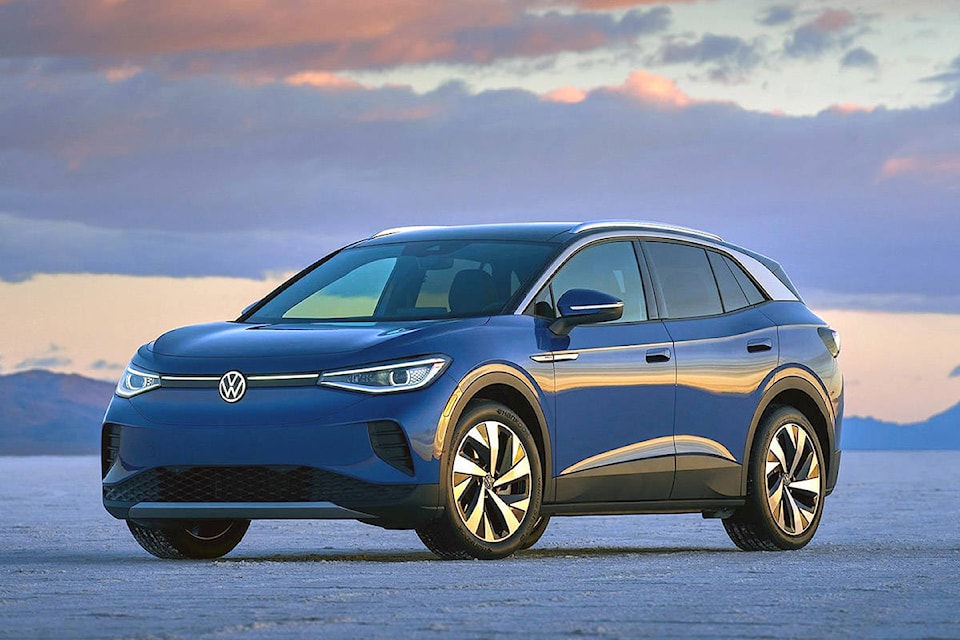The diesel-emissions-cheating scandal could have been the end for Volkswagen as billions of dollars were spent on fines and to make amends with customers.
To right its reputation, the company vowed to put diesel in the past and charge forward with a massive US $13.5-billion investment in an electric future.
And here we are — more than four years after the scandal broke in the fall of 2015 — with the rollout of the company’s first electric vehicle.
The five-passenger ID.4 hatchback, arriving by mid-2021, breaks new design ground and looks nothing like any existing VW model.
Compared with the Tiguan crossover, the ID.4 is about 11.5 centimetres shorter, four centimetres lower and has about 2.5 centimetres less distance between the front and rear wheels.
The ID.4 has slightly less cargo capacity and comes with available space beneath the load floor for stowing small objects.
Towing capacity is 1,225 kilograms compared with 680 for the Tiguan.

The ID.4’s interior comes with a 10- or optional 12-inch display screen that’s slightly angled toward the driver. Separate (redundant) volume and temperature controls are located below each screen. A 5.3-inch screen is in place of a traditional gauge cluster and has separate battery-charge status and range displays.
Interior lighting includes a thin strip extending the length of the dashboard, positioned along the base of the windshield.
All ID.4s come with “Hello ID” voice control for drivers to adjust the cabin temperature, request specific directions and summon music selections.
An 82-kilowatt-hour battery located below the floor supplies a motor that’s between the rear wheels. That’s right: just like the VW Beetle of old, the ID.4 is rear-wheel-drive. The system is rated at 201 horsepower and 228 pound-feet of torque.
According to Volkswagen, the ID.4 can go 400 kilometres on a full charge, which takes about 7.5 hours using a 240-volt Level-2 home outlet. When plugged into a 480-volt Level-3 commercial fast charger, topping up to 80 per cent battery capacity from five per cent takes less than 40 minutes.
Engaging the single-speed controller involves twisting an oddly shaped switch located beside the driver’s display.
The fuel-economy equivalent — based on average charging cost versus distance traveled — has yet to be determined. Launching later in 2021, the all-wheel-drive ID.4 will add an electric motor up front to produce an estimated 302 horsepower. With the same battery pack, it will likely have less range than the rear-wheel-drive model.
The base ID.4 comes with dual-zone climate control, heated steering wheel and side mirrors, six-way power-adjustable seats and wireless phone charging. Base pricing hasn’t been set for Canada but expect the low-$50,000 range.
The midgrade trim has a panoramic roof, faux leather upholstery (instead of cloth), 12-way power seats with massage function, ambient lighting, power tailgate and adaptive LED headlights that pivot in the direction of a turn. There’s also an illuminated VW logo on the nose.
The premium package includes 20-inch wheels (18-inchers are standard), silver roof rails on a blacked-out roof and unique bumper add-ons.
All ID.4 trims are outfitted with considerable dynamic safety technologies such as adaptive cruise control, forward-collision warning, autonomous emergency braking, pedestrian detection and rear-backup alert. Road-sign display, high-beam-sensing control and parking assist are also standard.
Note that a heated windshield will come with the later-arriving all-wheel-drive ID.4, while a new base model with less content will be added for 2022 (when production moves to Chattanooga, Tenn., from Germany).
Factor in government incentives in British Columbia and Quebec — the federal iZEV program requires the ID.4 to have a base price of less than $45,000 — and this electric makes a tempting alternative to gasoline-powered vehicles, including those made by Volkswagen. Why? Mostly because it’s the right (popular) body style: a good-looking and functional crossover.

What you should know: 2021 Volkswagen ID.4
Type: Rear-wheel-drive midsize utility vehicle
Propulsion: AC electric motor (201 h.p.)
Transmission: Single-speed automatic
Market position: The ID.4 ushers in a new era for Volkswagen in North America, being the automaker’s first dedicated electric model. It’s part of a major push by VW to introduce a number of electric cars by the mid-2020s.
Points: Attractive body is as much a departure for VW as the ID.4’s engineering. • Positioning the motor at the rear is unique for any new model, electric or not. • Standard array of safety tech (part of a notable level of convenience features) covers nearly all contingencies. • Upcoming AWD option along with added performance should prove popular.
Active safety: Blind-spot warning with cross-traffic backup alert (std.); active cruise control (std.); autonomous emergency braking (std.); lane-departure warning (std.); pedestrian detection (std.)
L/100 km equivalent (city/hwy): n.a.
Base price (incl. destination): $50,000 (est.)
BY COMPARISON
Ford Mustang Mach-E
- Base price: $52,500
- New-for-2021 EV hatchback comes in a variety of strengths and ranges.
Kia Niro EV
- Base price: $46,900
- Well-equipped hatchback uses a 201-h.p. motor and has a range of 239 miles.
Nissan Ariya
- Base price: $52,000 (est.)
- Coming electric model can be had with 215 h.p. (FWD) or 389 h.p. (AWD).
– written by Malcom Gunn, Managing Partner at Wheelbase Media
If you’re interested in new or used vehicles, be sure to visit to find your dream car today! Like us on and follow us on



